Finding African wild dogs and lions
Day 2 – Beautiful dogs and a poor baby giraffe
At 4am, under clear skies, and on a warm morning, we left in search of the dogs, one pack of 5 dogs. No bait today, we just needed to find them. I sat upfront, my first session scanning in ZRR. We drove south, tried a couple of hills, nothing. We drove all the way north and tried again – a faint signal. The signal for WDM2 (Wild dog male 2) was beeping very fast; I knew this meant mortality mode – Dani wasn’t stressed, the collar is stuck in that mode, nothing to worry about. We also scan for F2 (female 2).
We head towards the signal, it gets stronger, Dani consults the map and we keep looking. The signal comes and goes, and we occasionally lose it. They’re probably hunting along the drainage lines, lots of blind spots down there. We climb up into the hills, past a low flying black kite, attempting to head them off – but we lose them completely and need to double back. I scan as we drive, the signal is stronger; I keep my eyes peeled, “there they are”, I spot them, drinking, down by a dam.
All 5 dogs were there, and what beautiful dogs they are. One in particular, she’s without a name, but she is covered with bold white markings, the most beautiful of all the dogs I’ve seen in KZN, I dubbed her “101”, after all those dalmations. Her sister is known as “eggs”, for two white patches on her back that look like fried eggs. Then there’s the alpha female, F2, she has a love-hate relationship with this pack and often behaves differently, but she’s still their leader.
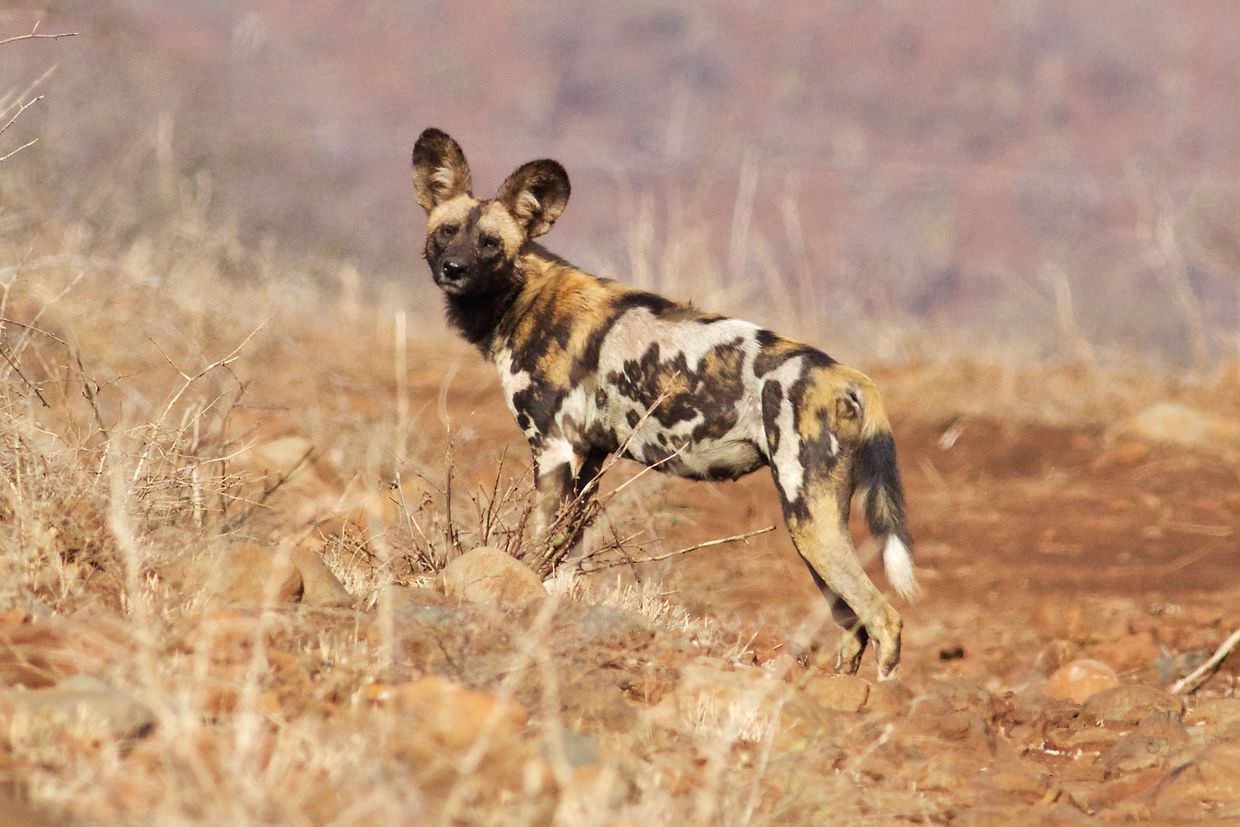

Normally they’d be drinking from the water here, but they were nervous; they approach the edge with caution, then run away without drinking. We couldn’t see anything, but crocodiles have been know to lurk here. Upstream waterbuck and impala are walking, oblivious to the dogs and crocs. Grey heron and yellow-billed stork are fishing.
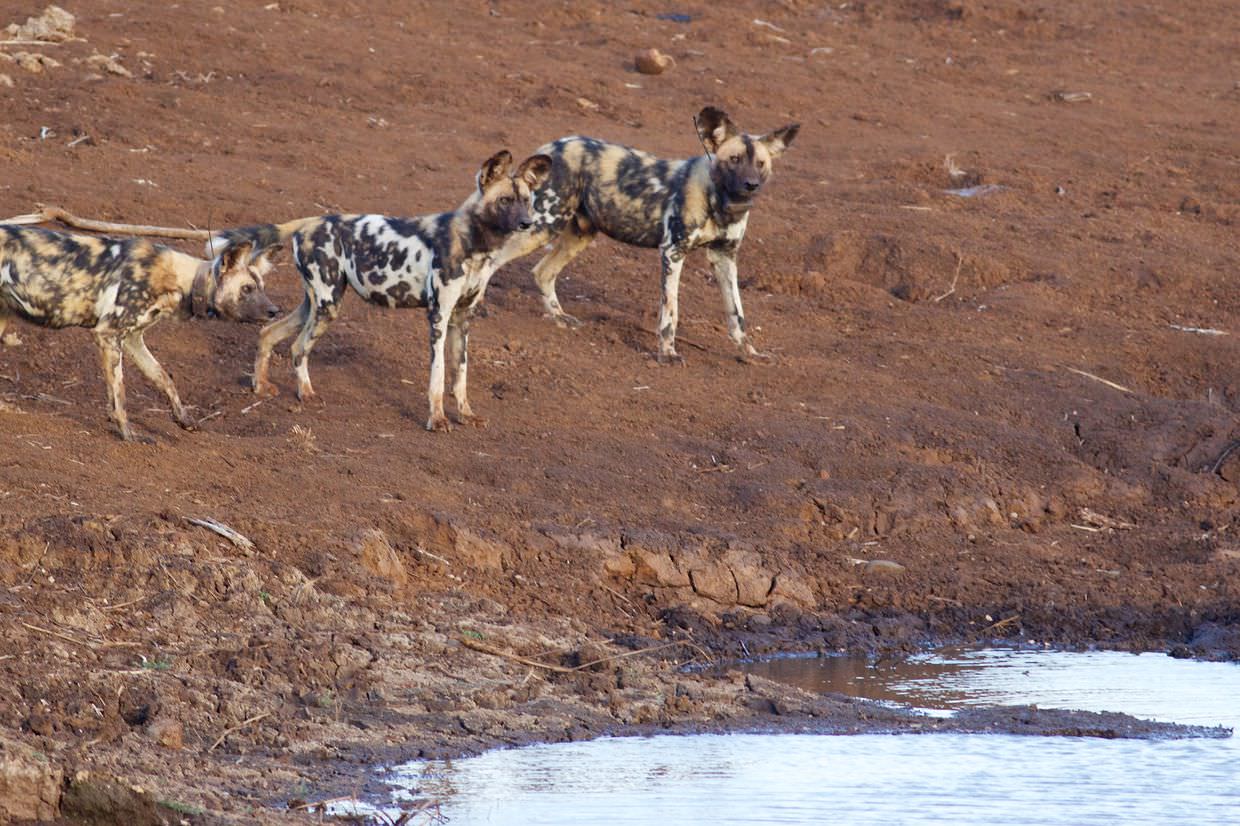
When we find the dogs in ZRR we radio it in; this gives nearby guides the opportunity to come and show their guests. These are the paying tourists, they keep the place running, so they get priority views – we have to give way and give them the best spots, even if sometimes this means we can’t get the observation notes we need. The guides can be more aggressive too; a common frustration is seeing them driving too close to the animals, or shining bright lights in their faces at night; the tourists often speak loudly, and many use flash photography. It’s frustrating. We let them watch the dogs while we go and have coffee and rusks elsewhere.
We return to find the dogs still there, sleeping on the bank, in the sunshine. They don’t stick around long, they’re quickly up and on the move again. They head down a road, and we follow them from a distance, they head toward a fence line and we lose them. Nearby cape glossy starlings are glowing in the sunshine, and an African paradise flycatcher sits near a southern yellow-billed hornbill.
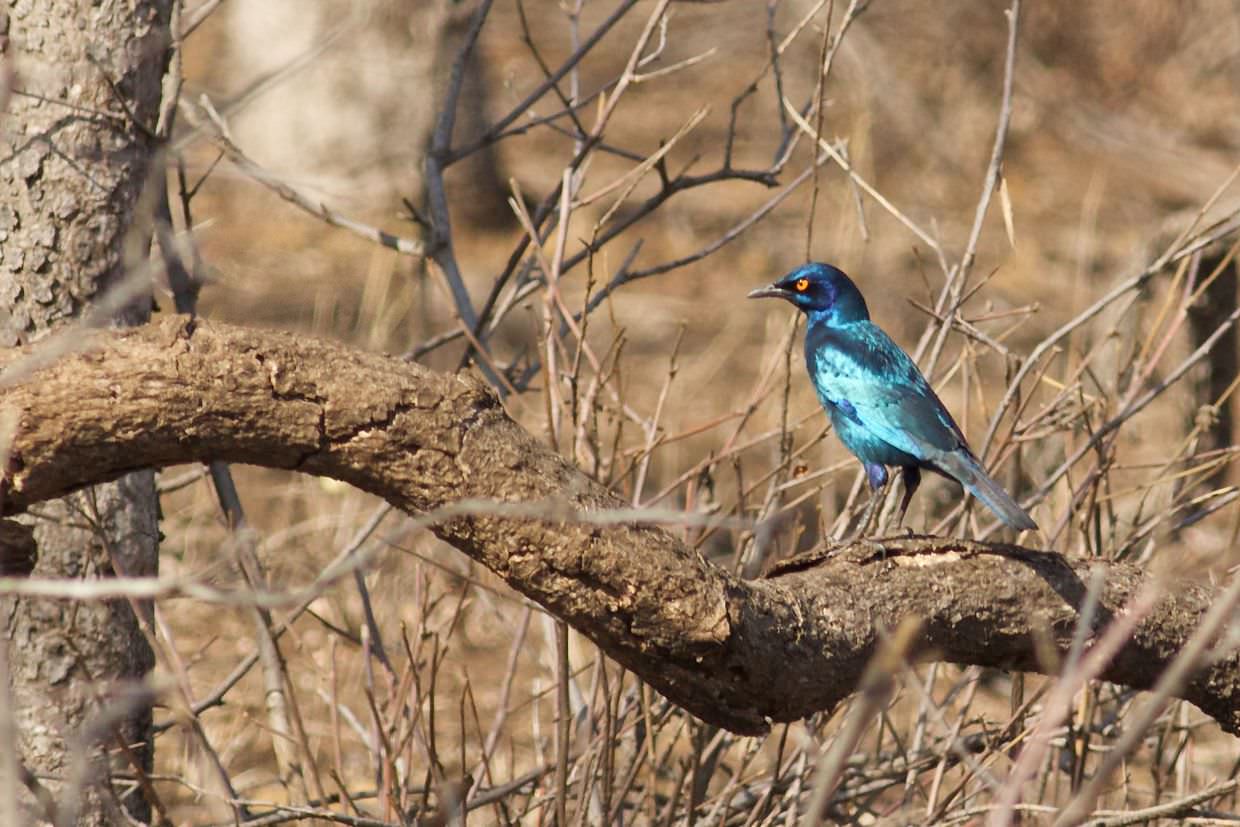
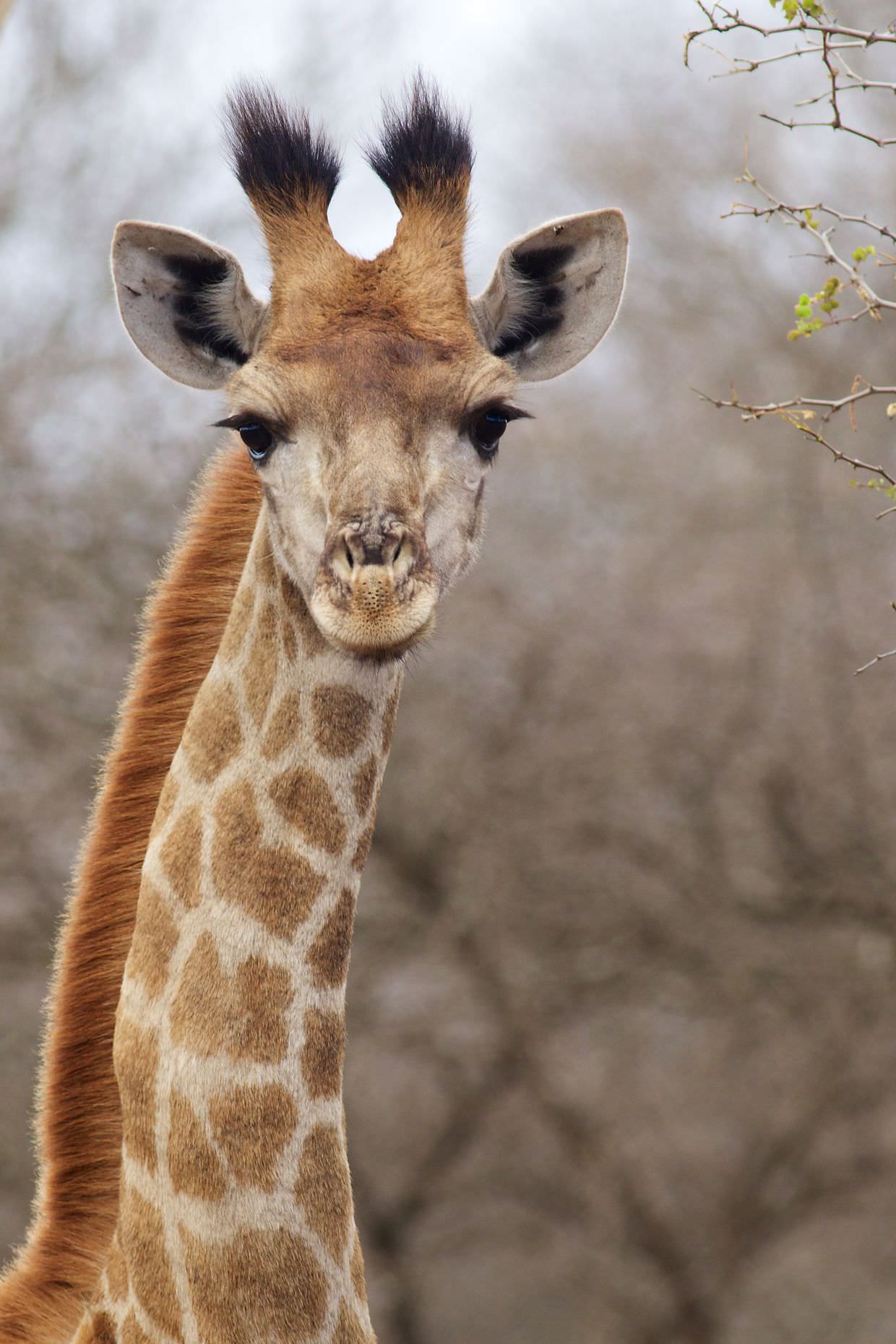
Lions and giraffe
By the afternoon session the skies have turned dark, the sunshine replaced with heavy overcast skies. We were looking for dogs again, but as we leave camp, Paweł spots a lion; “stop!”. On our driveway, right besides camp, a pride of 7 lions feeding on a kill – 2 adult females and 5 cubs of unknown sex. In my entire 8 weeks, this is the only sighting of lions feeding. We strained to see their prey, I look with binoculars, it’s yellow and brown, it’s a giraffe. “A giraffe!”, Dani exclaims, she calls monitor Megan to let her know, “WHAAAAT!” we hear her scream. We radio in the sighting, the guides are ecstatic too. A giraffe is an impressive and rare catch.
This morning, on our way back, we had passed a giraffe and her baby right here. I took a nice portrait. Now I had another photo, of cubs feeding on it. “This is Africa”. Rest in peace little one. A cub picks up its head and begins gnawing on it.
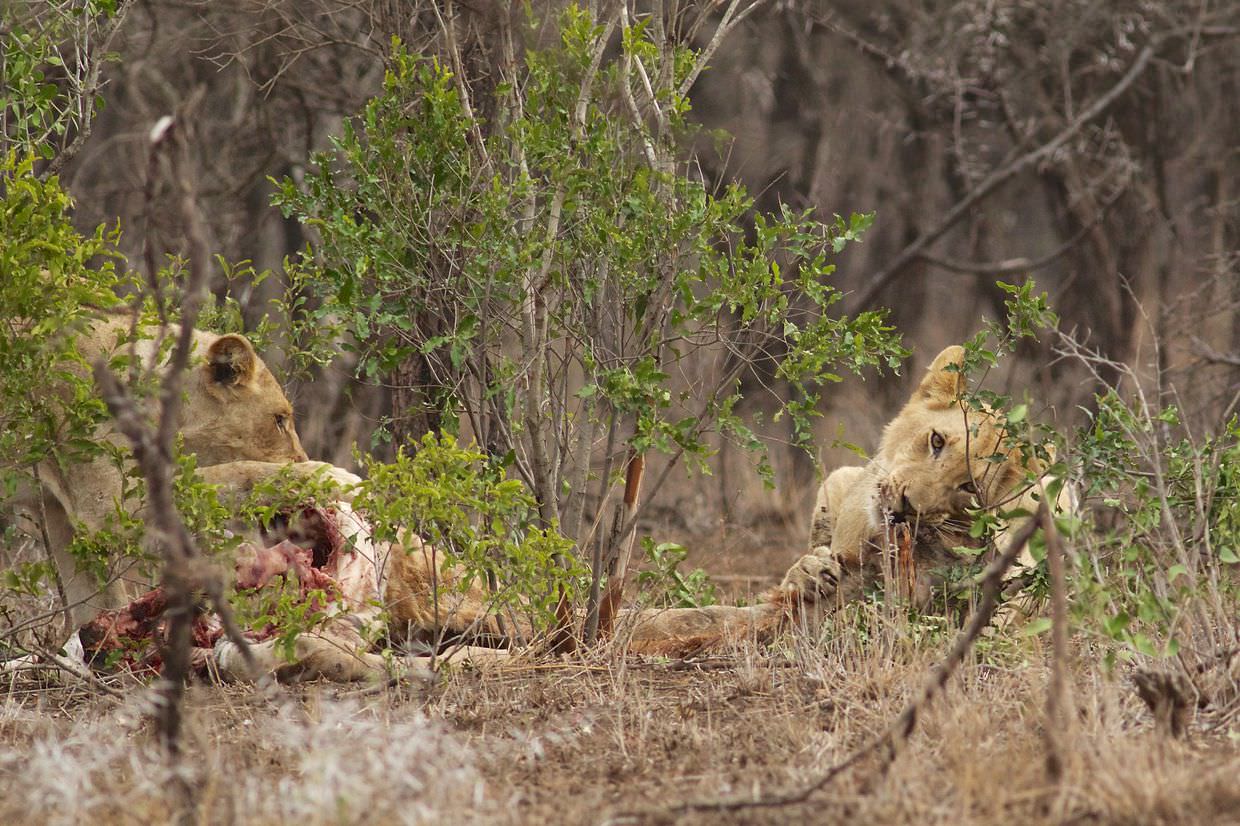
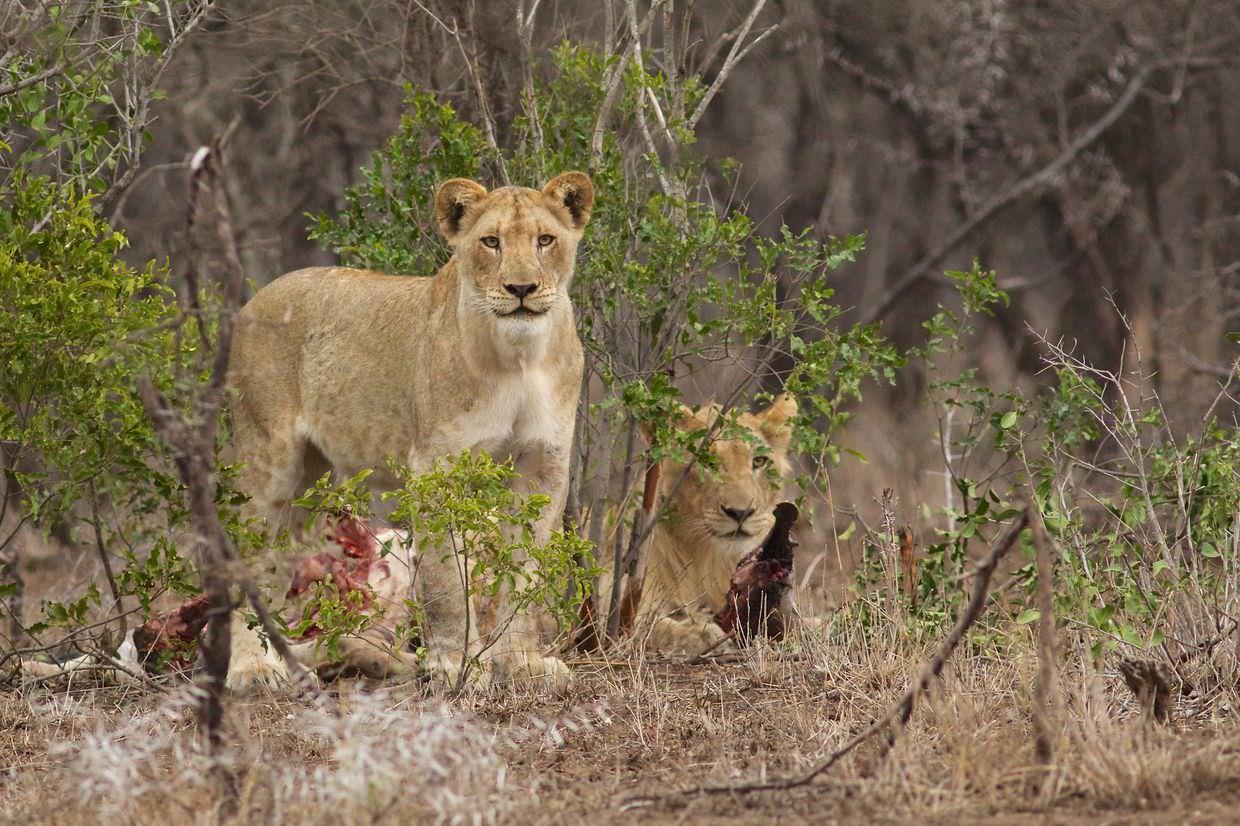
Guides begin to arrive and we leave in search of dogs, Paweł scanning for the first time. We pass dead animals on the roadside, dead from exhaustion – now just a dried out hide and some bones; Sylvia practices her broken English, “Dead” she says; “Yes, definitely dead”, Babs replies. “It’s just sleeping”, I add.
We return to the dam and pick up a signal. We drive slowly, up and around the hill, everyone’s eyes focussed on the right, trying to find them. Staring straight ahead, I spot them, “12 o’clock” I whisper. They’re sleeping on the roadside.
We stay with them for an hour, they’re resting here tonight. On the drive home we keep an eye out for the lions in the dark.
Day 3 - Learning the wild dog routine
Another 4am start, as would be the routine for the first week – we left before daybreak in search of the dogs. Sylvia was scanning this morning, the dogs weren’t where we’d left them. They’d gone south. We stopped on all the hilltops to scan; a faint signal, we head East; a strong pulsing signal now. The signal takes us out to the border fence, and we follow the road North, trying to find them. On the hill in front, above us, three silhouettes, the dogs are here, heading our way, down the hill. All 5 now, walking this way, they canter right past us, on their morning hunt. We call it in, and then the guides are here too.
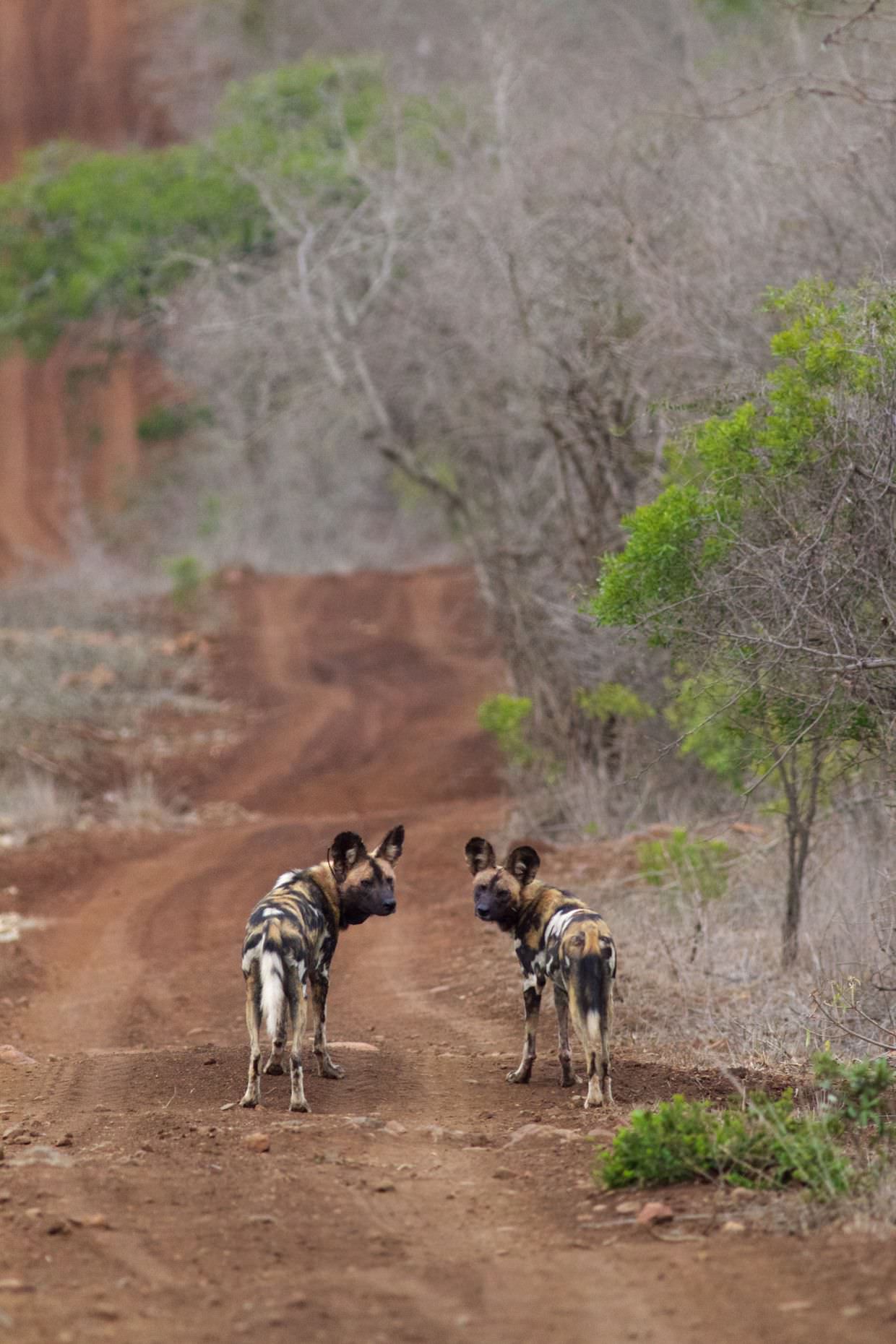
One of the dogs is nicknamed Endo, the alpha male. He likes to rise up on his front legs and urinate on his mate. He does this a lot. The tourists were treated to his show right in front of their vehicle before the back disappear over a hill. We track them with telemetry again, and I see my first ostrich sighting. After coffee and rusks we try but fail to get another visual.
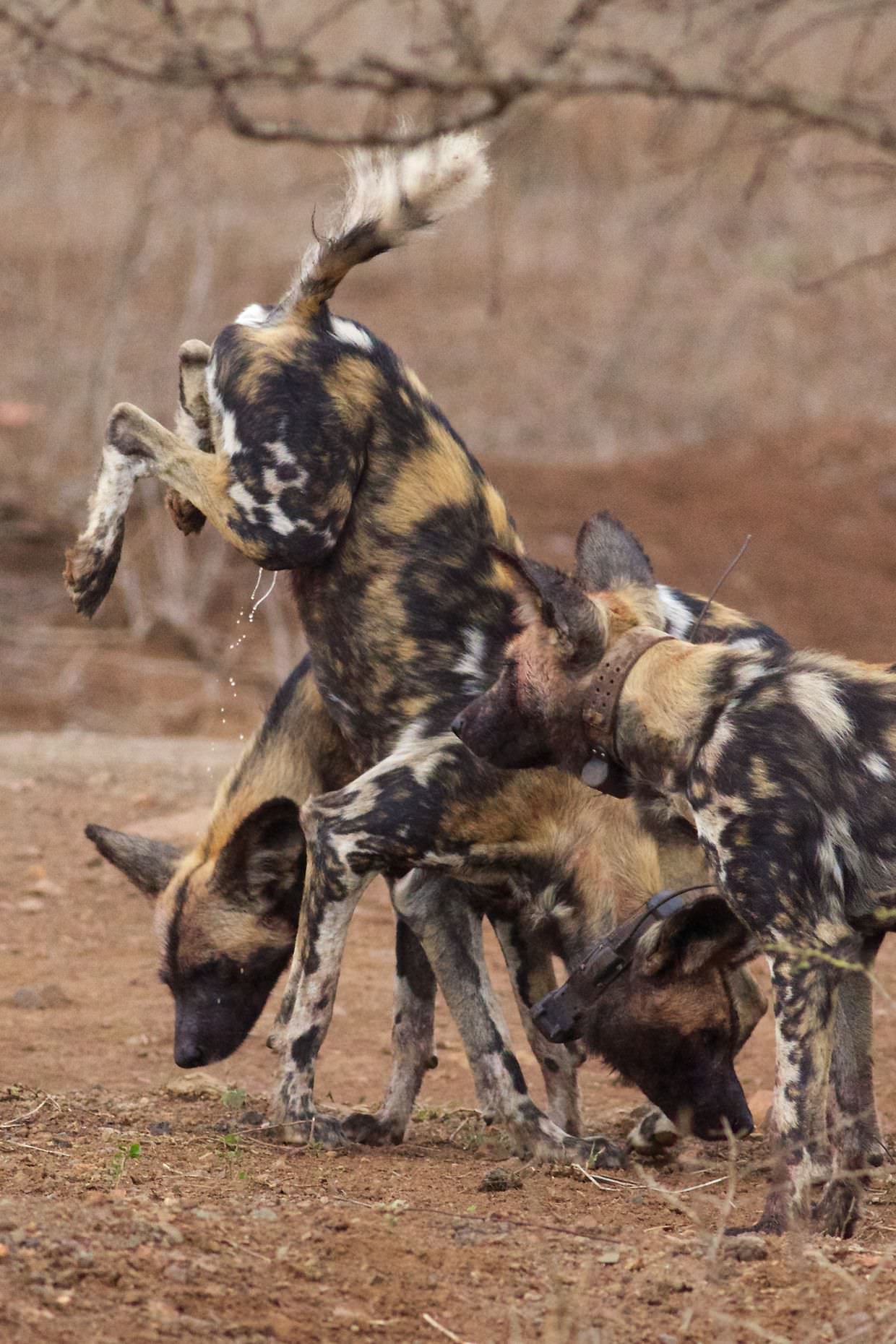
The guides use zulu names for all the animals on the radio, this stops tourists asking to see the cheetah or the lion if they overhear something. We try to memorise them ourselves, indlovu – elephant, ibhubesi – a big cat, ie lion, ingwe - leopard, ingulule - cheetah, ubhejane - black rhino. On the drive home I point out a lilac breasted roller and a striped kingfisher.
After a 3 hour lunchtime nap, such is the ZRR way, we left on a 3pm afternoon session in the cold and wet – looking for dogs again. I double up on my wet weathers, but somehow, I can’t fathom quite how, the water always manages to get in. I duck the worst of it by sitting in front with Dani.
We begin at a feeding site, taking note of elephant EM1, eating sugar cane amongst the wildebeest, buffalo, guineafowl and vervet monkeys, then continue to where we left the dogs. It’s unlikely we’ll spot them in the drizzle, they probably aren’t active, more likely hunkered down somewhere to keep warm.
It’s not an eventful session, but in the corner of the reserve, beside the N2 highway and a service road, we find the dogs sleeping; not the most idyllic place to rest – every few seconds a car or lorry rushes by, a horn honks, the dogs don’t mind.
It’s a long drive back in the rain, the park has resorted to “wet roads only”, which means the shorter routes aren’t open.